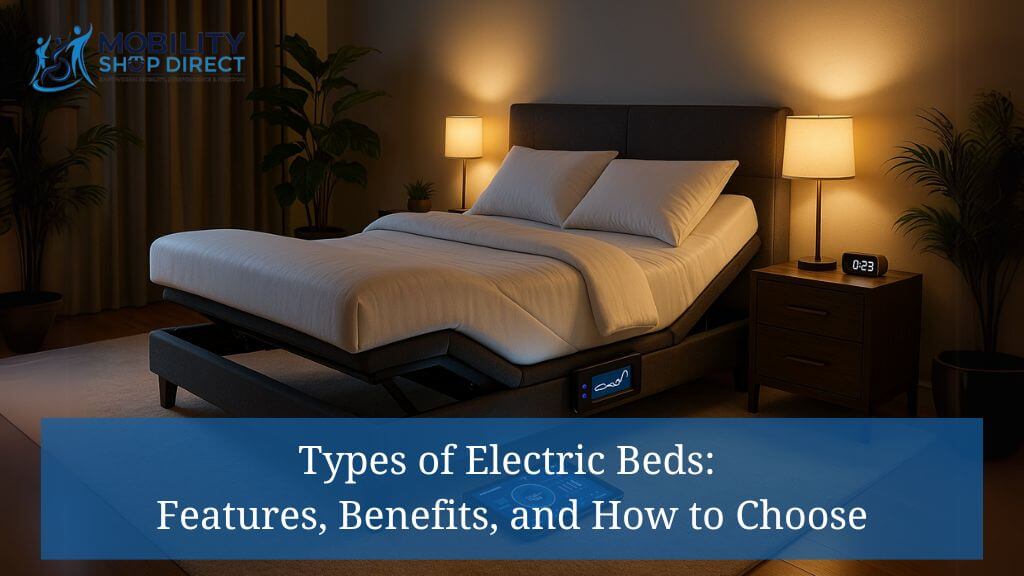When was the last time you woke up feeling truly refreshed; without the familiar ache of back pain or the frustration of restless sleep? For many, the solution goes beyond stacking pillows or adding another mattress topper; it may lie in upgrading to an electric bed. These modern sleep solutions, often associated with hospital settings, have evolved into sophisticated tools for improving comfort and addressing sleep-related concerns. Today’s electric beds boast cutting-edge designs, tailored functionality, and even health-enhancing features. But with a growing variety; ranging from basic adjustable frames to split options for couples, and even tech-savvy smart beds - how can you identify the perfect choice for your needs?
Choosing an electric bed is not merely about convenience; it’s about striking the ideal balance between adaptability, durability, and personalized comfort that aligns with your lifestyle and health goals. In this comprehensive guide, we’ll explore the most popular types of electric beds, dive into their innovative features, and compare them to traditional sleeping solutions. By the end, you’ll be equipped with everything you need to make an informed decision; whether you’re dealing with chronic pain, seeking enhanced sleep quality, or simply looking to integrate smart technology into your bedroom. For a broader look at key differences, check out our comparison of electric beds vs. traditional beds.
Are you ready to uncover what sets electric beds apart? Let’s explore the essentials and guide you toward better sleep.
Table of Contents
- Introduction
- Types of Electric Beds: Features and Options
- Factors to Consider When Choosing an Electric Bed
- Pros and Cons of Electric Beds
- Electric Beds vs. Traditional Beds
- How to Choose the Right Electric Bed
- Conclusion
Key Takeaways
For those considering an electric bed, here are a few quick insights to guide you:
- Electric beds come in various types, including basic adjustable models, split options for couples, and high-tech smart beds. Choose based on your lifestyle and comfort preferences.
- Mattress compatibility matters; foam and latex mattresses typically work best with adjustable bases for smooth transitions.
- These beds offer significant health advantages, including alleviating sleep apnea, back pain, acid reflux, and circulation issues due to customizable positioning.
- While they offer unmatched comfort and technology, be mindful of higher initial costs, regular maintenance, and space requirements.
- Most electric beds are built to last 10–15 years and often feature additional perks like massage functions, under-bed lighting, and smart app integrations.
Types of Electric Beds: Features and Options
Basic Adjustable Beds
The simplest style of electric beds, basic adjustable beds allow users to adjust the head and foot sections independently. With a straightforward, no-frills design, these beds provide comfort and practicality, ideal for those looking to improve their nightly rest or lounging experience.
- Easy-to-use remote control for position adjustments.
- Support for elevating head or lower-body positions.
- Ideal for reading, watching TV, or relieving mild health issues like acid reflux.
Split Adjustable Beds for Couples
Split adjustable beds are an excellent option for couples with differing sleep preferences. These models feature independent adjustment zones, allowing each person to choose their preferred sleep position without disturbing their partner.
- Dual controls for individualized comfort.
- Perfect for partners with varying needs, such as one requiring head alignment for better breathing while the other prefers a flat surface.
Smart Beds with Advanced Features
For tech enthusiasts and health-conscious individuals seeking luxury and innovation, smart beds are the pinnacle of modern bedding technology. These beds combine comfort with automation, offering features like app-controlled adjustments, sleep tracking, and pre-programmed settings.
- Sleep sensors to monitor rest patterns and suggest optimal configurations.
- Voice-activated or app-based controls for convenient operation.
- Enhanced features such as massage modes, temperature regulation, and under-bed illumination.
Factors to Consider When Choosing an Electric Bed
Mattress Compatibility and Options
Not all mattresses pair well with electric bed frames. Foam, latex, and hybrid mattresses are usually the most compatible due to their flexibility and ability to conform to various positions. In contrast, traditional innerspring models might lack the elasticity to adapt effectively.
Health and Comfort Benefits
For people contending with medical conditions like back pain, circulation issues, or sleep apnea, electric beds can provide meaningful relief. Features like zero-gravity positioning can minimize pressure points, promote spinal alignment, and improve overall relaxation.
Assessing Longevity and Durability
Electric beds, on average, last between 10 and 15 years. Regular maintenance; such as tightening loose screws and keeping the motor clean—can significantly extend the lifespan of these beds, giving them lasting value.
Additional Features to Look For
- Built-in massage settings for relaxation.
- Under-bed lighting for convenience.
- Wall-hugging designs to conserve space and maintain reach for bedside items.
- Enhanced lumbar support to cater to back health.
Pros and Cons of Electric Beds
Advantages of Electric Beds
- Customizable sleep experience: Adjust as needed for optimal comfort.
- Health benefits: Alleviates symptoms of specific conditions like snoring, sciatica, and acid reflux.
- Technology integration: Smart features can promote better sleep hygiene.
Challenges and Potential Downsides
- High upfront costs: Initial investment may exceed that of traditional beds.
- Maintenance requirements: Moving parts and motorized components necessitate upkeep.
- Size considerations: These beds are heavier and require ample space.
Electric Beds vs. Traditional Beds
Key Differences in Functionality and Design
Electric beds shine in customization and adaptability, making them ideal for people with special health or comfort needs. In contrast, traditional beds excel in simplicity and lower initial costs but lack functionality.
Comparing Costs and Value
Although electric beds are more expensive upfront, their additional health benefits and extended use make them a worthwhile investment for those prioritizing comfort and wellness.
Practical Use Scenarios
- Seniors with mobility or joint issues.
- People recovering from surgery or managing chronic pain.
- Individuals embracing smart-tech-enabled living spaces.
How to Choose the Right Electric Bed
Matching Features to Your Needs
Consider your specific needs, such as enhanced back support or the ability to adjust for acid reflux relief. Couples may prioritize dual-zone controls, while tech enthusiasts might lean toward smart functionality.
Budget Considerations
Determine your budget and prioritize features that deliver long-term benefits, such as adjustable lumbar support or durability.
Room and Frame Compatibility
Assess the size and layout of your bedroom to ensure proper fit and aesthetic compatibility. Also, check whether installation services are available.
Conclusion
Investing in an electric bed is more than just upgrading your bedroom; it’s about improving your overall quality of life. From basic models to advanced smart beds, there’s an option for every lifestyle and need. Prioritize your health, comfort, and personal preferences, and take the time to explore the wide variety of available designs. With the right electric bed, improved sleep and enhanced well-being are just a decision away. To explore available models, browse our full range of electric bed options today.



